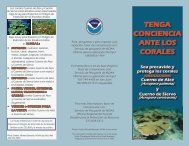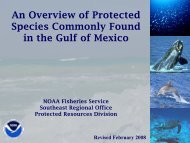NOAA Technical Memorandum NMFS-SEFSC-xxx
NOAA Technical Memorandum NMFS-SEFSC-xxx
NOAA Technical Memorandum NMFS-SEFSC-xxx
You also want an ePaper? Increase the reach of your titles
YUMPU automatically turns print PDFs into web optimized ePapers that Google loves.
3. Ultimately our initial hypotheses must be evaluated in the context of both achange in management regime and major disturbance:a. Is ‘recovery’ (increased A. palmata cover, decreased snail abundance)from the 1998 disturbance enhanced in the reserves compared to thereference sites?METHODSField Surveys:The study sites were offshore bank reefs in the northern sector of the Florida KeysNational Marine Sanctuary (FKNMS), Florida, USA (Fig 1, Table 1) where A. palmatapopulations were known to persist. A. palmata and their resident Coralliophilaabbreviata populations were surveyed at 6 offshore sites, three no-take reserves, calledSanctuary Protected Areas (SPAs), and three reference (fished) sites.Annual surveys of A. palmata patches at each site were undertaken in May eachyear from 1998 to 2001. At the southern study sites, A. palmata patches were small andof low density in which case all colonies were sampled and the area of the patch wasmeasured (fully censused). These sites (French, Molasses, and Pickles) are subsequentlyreferred to as “low density,” or LD, A. palmata stands (Fig. 1). The three northern siteshad extensive patches of higher colony density which we termed “thickets” (Fig. 1). Thelarge thickets at South Carysfort and Horseshoe were subsampled using haphazard belttransects. At Little Grecian, the thicket was small and so this patch was fully censused,like the LD sites. In all years but 2000, each standing colony was measured (length andwidth to nearest decimeter) and its condition assessed by estimating percent of colonysurface with live tissue (% in five categories 0-10, 10-25, 25-50, 50-75, 75-100) as wellas the presence of disease, damselfish, etc. From these measurements a live area index(LAI) was calculated (Length * Width * % live / 100) as a rough estimate of live coralcover (or size) for the irregular, arborescent colonies. Each colony was then searched forsnails, Coralliophila abbreviata, which, when found, were counted, measured, andreturned to the colony (n= 21-165 snails per site per year). Loose fragments were notmeasured but were classified as small/medium/large (100cm)counted, and searched for snails. Thus, fragments are included in the reported snail3


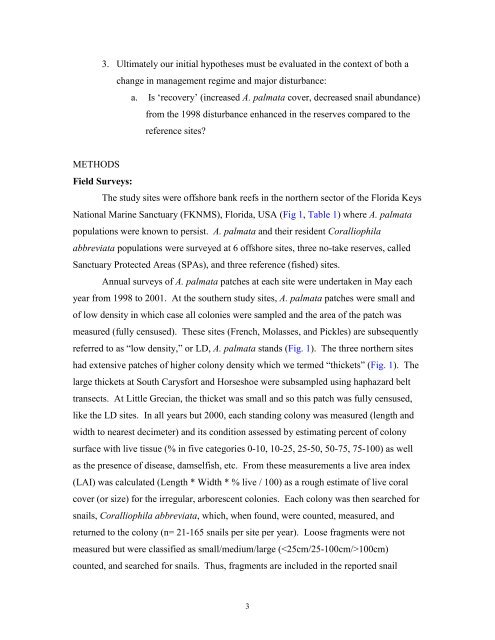
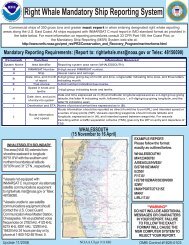
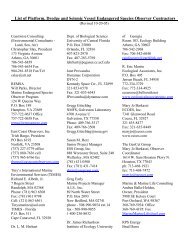
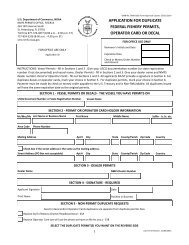
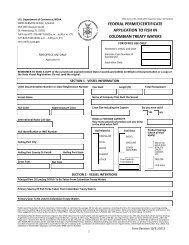
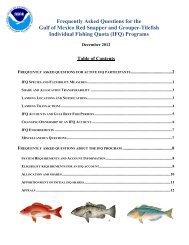
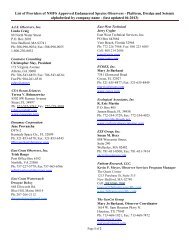
![Right Whale Fact Sheet [PDF] - Southeast Regional Office - NOAA](https://img.yumpu.com/28432664/1/190x245/right-whale-fact-sheet-pdf-southeast-regional-office-noaa.jpg?quality=85)

